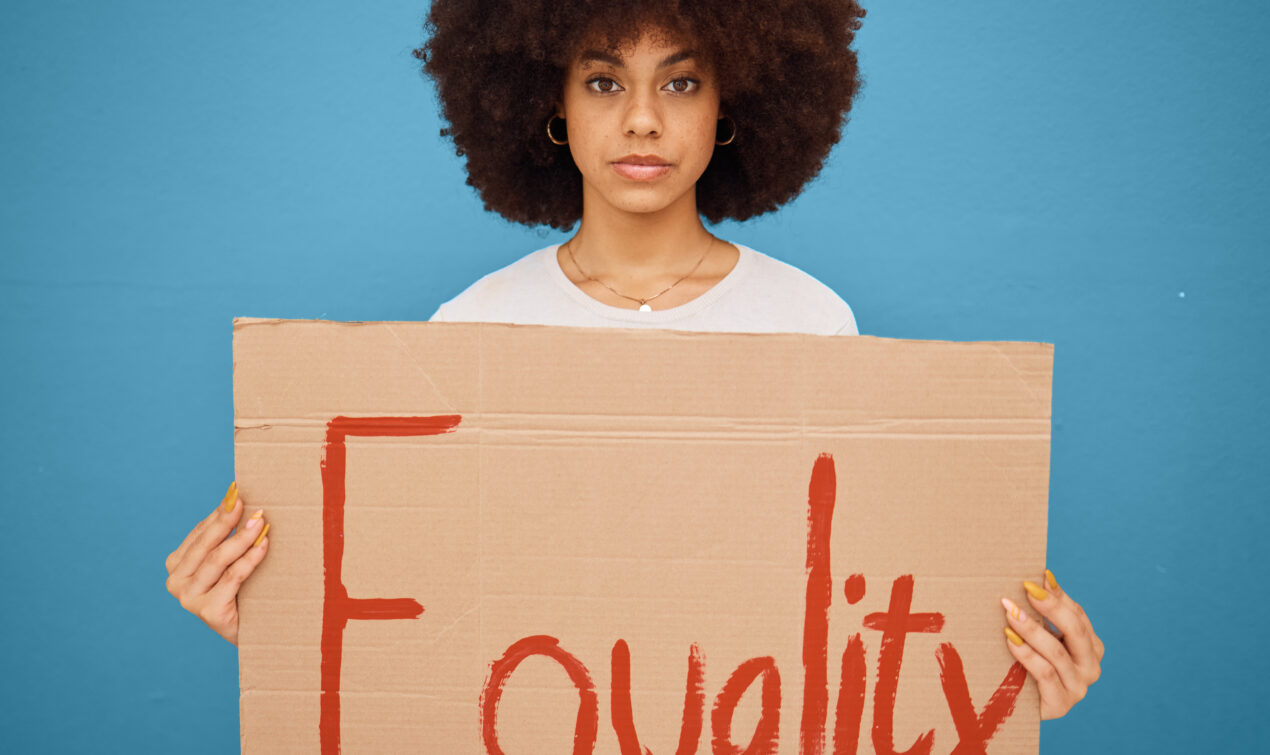Examining the history of environmental justice and the interconnectedness of social inequality.
Last summer, I sat down, perusing through Instagram days after the horrifying murder of George Floyd. An eye-catching graphic reading, “Environmentalists for Black Lives Matter” infiltrated my screen as I scrolled up and down. I stopped and clicked on the post. The moment I started reading the infographic, it became evident that I would never view social inequality or activism campaigns the same.
What is intersectional environmentalism? Activist Leah Thomas summed it up best in her Instagram post: “This is an inclusive version of environmentalism that advocates for both the protection of people and the planet.” Thomas coined the term intersectional environmentalism, writing, “It identifies the ways in which injustices happening to marginalized communities and the earth are interconnected. It brings injustices done to the most vulnerable communities, and the earth, to the forefront and does not minimize or silence social inequality.” Known and widely referred to as IE, Thomas and 23 other individuals joined together to create an IE council that provides countless resources, including ways to support BIPOC businesses, understanding how racism and environmentalism collide, how to get involved in your community and how to be a part of raising awareness.
At its core, sustainability is an unlearning of white supremacy and colonial values that are rooted in the exploitation of the land and labor of BIPOC communities.”
–Aditi Mayer, Photojournalist and Decolonizing Fashion & Sustainability activist
While intersectional environmentalism galvanized activists nationwide, Kimberlé Crenshaw revolutionized the concept of intersectionality itself as it pertained to the Black woman’s experience in her 1989 essay, Demarginalizing the Intersection of Race and Sex: A Black Feminist Critique of Antidiscrimination Doctrine, Feminist Theory and Antiracist Politics. She writes, “If any real efforts are to be made to free Black people of the constraints and conditions that characterize racial subordination, then theories and strategies purporting to reflect the Black community’s needs must include an analysis of sexism and patriarchy.” Intersectionality provides us with the tools to conceptualize social inequality beyond binary entities and allows us to move away from compartmentalizing issues like racism and climate change.
In an article in the National Association of School Psychologists titled, “Intersectionality and School Psychology: Implications for Practice” by Sherrie L. Proctor, Brittney Williams, Tracey Scherr, and Kathrynne Li break down exactly what intersectionality is.
“The term intersectionality was coined by Kimberlé Crenshaw in relation to how antidiscrimination laws did not protect Black women given that those laws treated race and gender as mutually exclusive categories of experience and analysis (Cooper, 2016; Crenshaw, 1989). Crenshaw (1989) challenged the use of a single-axis framework (i.e., one that considers single, rather than multiple categories of identity) as a basis for rendering legal decisions in employment discrimination cases involving Black women because such a framework did not account for the multiple ways Black women experienced discrimination. Crenshaw (1989) argued that individuals, especially those with multiple minoritized (which refers to a person being forced into a group that is mistreated, faces prejudices, or is discriminated against because of situations outside of one’s personal control) identities, should be viewed through a lens that takes into account how their identities intersect to influence their experience of the world, particularly experiences that lead to discrimination. Intersectionality, therefore, refers to the simultaneous experience of social categories such as race, gender, socioeconomic status, and sexual orientation and the ways in which these categories interact to create systems of oppression, domination, and discrimination.”
“Environmental justice is the intersection of both social justice and environmentalism, where the inequity in environmental degradation is also considered.” –Leah Thomas
Despite new terminology, climate-altering events that disproportionately harm marginalized populations have existed since colonial times. The Columbian Exchange, marked by Christopher Columbus’ 1492 voyage, began a period of colonial conquest that devastated indigenous land. European diseases such as measles decimated up to 99 percent of indigenous populations in the Caribbean by 1600. The Virginia Company was founded in 1606 by King James I. Offering male settlers 50 acres of land in exchange for inhabiting the New World, it enabled the mindset of patriarchy. Over time, the aristocratic planter class banded together and established plantations, dominating society. Cash crops not only altered the land drastically but could be successfully exported, allowing plantation owners to buy more land and more slaves from the transatlantic slave trade. Class divisions arose between wealthy plantation owners and their enslaved laborers, illustrating both the land and racial exploitation that prevailed during this period.
As slavery became crucial to globalization and profit, indigenous populations also suffered greatly from racism, environmental degradation and colonialism. In 1830, President Andrew Jackson signed the egregious Indian Removal Act that forced ceding land and westward migration in what is now referred to as the Trail of Tears. Throughout the 1800s, increasing belief in Manifest Destiny–the divine right of colonists to move westward–only furthered these devastating consequences, heightening American greed for land ownership. The Indian Appropriations Act of 1851 allocated small reservations for indigenous populations to live on, and the Dawes Act of 1887 made parts of reservation land private property, instead of shared spaces. These acts illustrated forced assimilation attempts into American culture and society.
KEY TERMS
- Privilege. Privilege refers to unearned access to resources and social power that are only available to some as a result of their advantaged social group membership (Adams, Bell, & Griffin, 2007).
- Oppression. Oppression is defined as a system that maintains advantage and disadvantage based on social group memberships and operates, intentionally and unintentionally, on individual, institutional, and cultural levels (Adams et al., 2007).
- Know thyself. As indicated, self-awareness is the first step required to facilitate use of an intersectional practice lens. Carroll (2009) noted that awareness has four components: (a) awareness of self and one’s own personal values and beliefs; (b) awareness of others and their multiple identities; (c) awareness of systemic issues such as privilege; and (d) awareness of the implications that professional decisions have on students today, tomorrow, and in the future.
- Knowledge development and education. Similar to models for multicultural competency development (e.g., Carroll, 2009; Proctor & Meyers, 2015), knowledge acquisition is a second step to engaging an intersectional practice lens.
- Encourage systems change. Changing systems that privilege some, while oppressing others, is essential to using an intersectional practice lens.
- Be a social justice advocate. NASP’s definition of social justice underscored that social justice is both a process and a goal that requires action to facilitate equity and fairness for all students (Barrett & A’Vant, 2017).

While indigenous populations were forced to inhabit less desirable land and slaves were being exploited to tend to this stolen land, where was environmental justice? Environmental justice is defined by the Environmental Protection Agency as, “The fair treatment and meaningful involvement of all people regardless of race, color, national origin, or income, with respect to the development, implementation, and enforcement of environmental laws, regulations, and policies.” Seeds of environmental injustices are sown throughout colonialist conquest, but the movement itself did not begin until 1982 when residents of North Carolina’s Warren County—a predominantly Black community—protested a PCB-contaminated landfill.
The protests inspired action, and nearly 10 years later, the First National People of Color Environmental Leadership Summit was held in Washington D.C. From this summit, 17 principles of environmental justice were released. These tenants range from educational initiatives on social and environmental inequality to resisting transnational corporations.
At waste sites, pollutant particles are trapped closer to the ground, causing temperatures to rise and disproportionately increase health risks. When towns are faced with pollution sites, many middle-class individuals have the resources to resist or move. Climate change affects low-income communities and BIPOC communities more readily than others because they often lack the income to relocate or demand accountability from private polluters. Despite President Bill Clinton’s Executive Order 12898, which sought to mitigate environmental injustices federally, issues entrenched in society require more effective long-term solutions that acknowledge the history of oppression and institutionalized racism in order to create meaningful change.
Many social inequalities thrive off of the development and implementation of the current economic system, demanding we look at these issues through a far more critical lens. Colonialism was driven by the desire for gold and wealth, but the Columbian Exchange ultimately stripped populations of generational knowledge and local infrastructure. That infrastructure would allow easier access to materials needed to rebuild after a natural disaster. Climate change and colonialism are interconnected because indigenous populations have been left on land that has been deforested and exploited by others for profit, increasing their risk for problems like soil erosion.
“Radioactive Colonialism” reflects targeting indigenous lands for uranium mining and disposal. Bullard and Johnson write, “The legacy of institutional racism has left many sovereign Indian nations without an economic infrastructure to address poverty, unemployment, inadequate education and health care, and a host of other social problems.” An example of institutional racism in Black communities occurred when Hurricane Katrina hit New Orleans. This natural disaster highlighted climate change and racism because Black residents received disproportionate government aid, resulting in halted and slowed rebuilding efforts.
In the current moment, Black Lives Matter illustrates an interconnected web of social inequalities present in modern society, providing a space to act. The force behind the early environmental justice movement included diverse grassroots activism and organizing. The importance of grassroots organizing in driving change, both in a historical context and in understanding how to use intersectional environmentalism, is critical to reshaping the future.

Thompson emphasizes that intersectional movements have propelled the Green New Deal forward, noting, “The movement for Black lives and indigenous sovereignty movements are taking us a lot quicker towards that goal because they’re connecting these deeper, stronger ideas around environmental racism and environmental justice.” On changing how she organizes since last summer, she adds, “All of us had varying degrees of knowledge going into it, which cracked us open individually, but also as a movement. That summer we dropped everything to meet this whirlwind moment where you couldn’t stop the flow of people power.”
Thompson also details the changing strategy of the national movement to give individual hubs agency to focus more on community-specific issues. She says, “Listening to our base is something we are continually getting better at while trying to maintain a national strategy.” Speaking on a personal level, she notes, “I allow intersectional environmentalists to continue to inspire me, and I don’t ever want what happened last summer to simply be something that happened in the blink of an eye.”
Thompson recognizes that the complexity of colonialism’s stronghold on society won’t go away overnight. Neither will racism, nor climate change and any other social inequality. But once we understand these issues beyond the surface, we can begin to act. You cannot fight climate justice without acknowledging all forms of social injustices. To enact change, we must be willing to amplify community voices and vote for leaders that will promote systemic progress.
When we are asked to consider this newfound sense of intersectional environmentalism in terms of how we govern and the way we think and address these inequities, we invite infinite opportunities to innovate and promote a better, more just future for the planet and those of us inhabiting it. “If we all do the thing we want to do, we will all get to collective liberation.” Thompson’s final words are powerful.
To learn more about Intersectional Environmentalism, check out: www.intersectionalenvironmentalist.com














